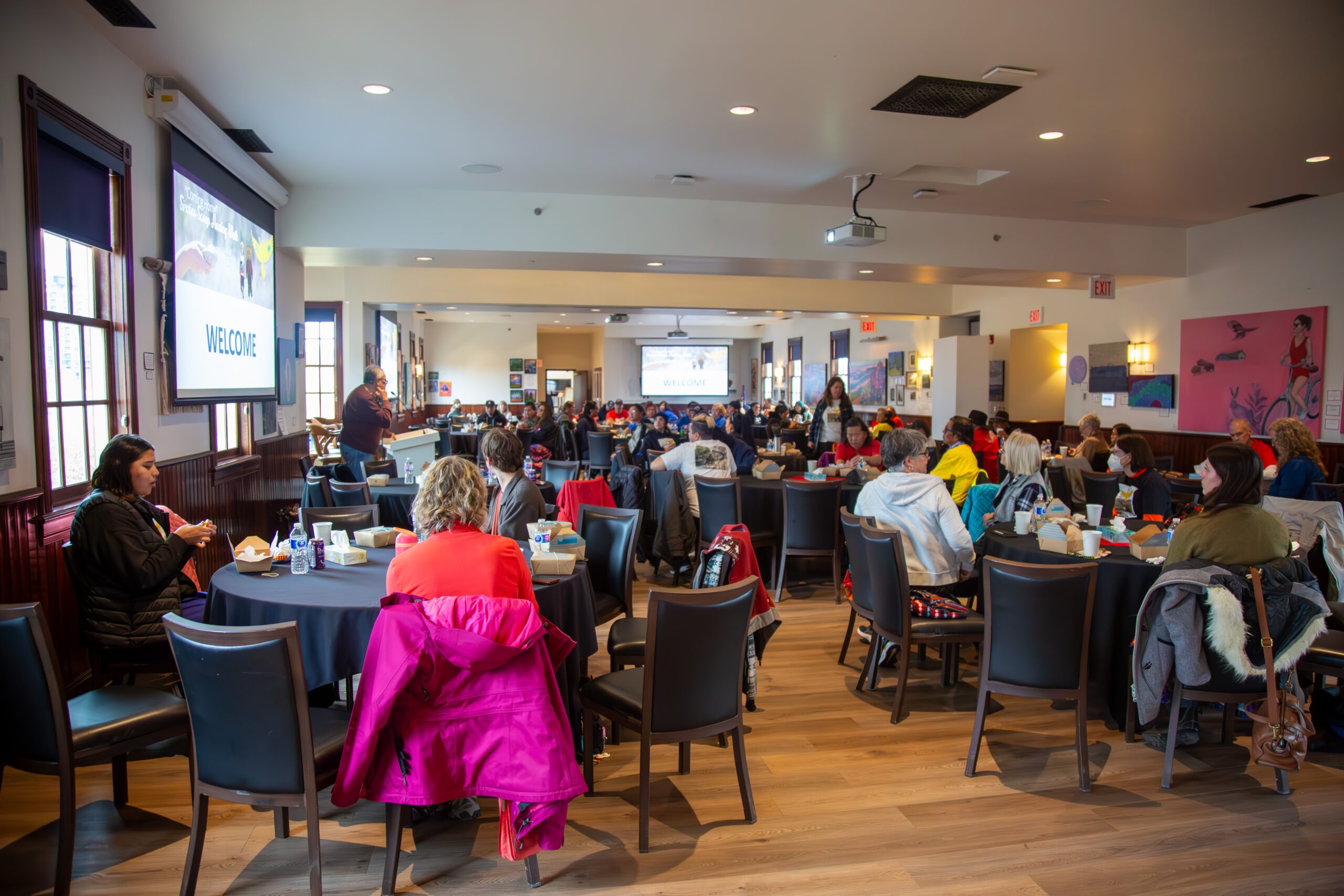“Coming Home” Sixties Scoop Healing Walk
Reconnecting and Rediscovering: A Day of Healing and Unity
Sometimes healing can be as simple as coming together for a walk.
Hull Services was proud to support the second annual “Coming Home” Sixties Scoop Healing Walk on Friday, October 13, from 10:30 a.m. to 4:30 p.m. at Fort Calgary.
If you’re unfamiliar with the Sixties Scoop, also known as The Scoop in Canada – the short version is this: It was a period of time in which new laws enabled child welfare authorities to take, or “scoop up,” Indigenous children from their families and communities for placement in foster homes, from which they would be adopted by white families. There are many survivors who have experienced unimaginable trauma.
One of those survivors works at Hull. Her name is Susan.
Susan Bare Shin Bone, Program Facilitator in Hull’s Braiding the Sweetgrass program, has been working at Hull for over four years and has been instrumental in guiding us along our path to Truth and Reconciliation and providing stronger Indigenous engagement within our practice.
She developed this initiative in 2021 when, quite literally, she woke up one day in such physical pain she couldn’t move due to the trauma of being a survivor.
“The Sixties Scoop Healing Walk became a journey of personal healing in 2022 when I woke up in March and was very depressed and couldn’t get out of bed,” says Bare Shin Bone. “I didn’t understand what was happening because I was good, I was healing, and then I realized March was the month I was taken.”
Bare Shin Bone knew she needed to do something externally, and with the support of Hull Services, the Sixties Scoop Healing Walk blossomed. This year’s theme was “Coming Home.”
“I have siblings that passed on because they were in the Sixties Scoop and didn’t deal with it,” says Bare Shin Bone. “And this year, it was more about getting community together, learning from community, so that’s why it was “Coming Home.” Coming home can be anywhere you are as long as you feel grounded and that is why I try and continue to be grounded.”

This family-friendly event welcomed everyone to attend – and many came together, both Indigenous and non-Indigenous, for healing and to celebrate survivors’ journeys.
The healing walk began outside Fort Calgary by the Bow River. To begin, everyone was given a piece of sage to say their prayers throughout the walk. There were four stops along the route that included healing dancing, elders teaching, ceremony, and guest speakers. Just after the third stop in the walk, everyone burned their sage in a fire and made their way over to the buffalo statue near the entrance of the Fort Calgary building for the final healing stop before heading inside for lunch. After lunch, there was prayer, activities, entertainment, guest speakers and many survivor stories.
As survivors shared their stories, they all seemed to have shared a similar struggle. Their loss of culture impacted them so greatly that their journey to healing and rediscovery was extremely challenging and caused a lot of anxiety.
Sitting quietly in the corner of the room were two young women who were intently listening to every word.
Valentine Negussie was one of the young women. She is currently taking social work at Mount Royal University and her professor recommended the event.
 “Hearing first-hand from people who survived those traumatic events was very impactful,” says Negussie. “Especially for me because I want to be a social worker, so I have to be very aware. I also want to work with Indigenous communities, and I don’t want to inflict more harm.”
“Hearing first-hand from people who survived those traumatic events was very impactful,” says Negussie. “Especially for me because I want to be a social worker, so I have to be very aware. I also want to work with Indigenous communities, and I don’t want to inflict more harm.”
And Negussie’s social worker instincts are already impacting those around her, specifically speaking about her friend, the other young woman sitting beside.
Her name is Madison Kibble – she’s Indigenous – and this was her first Indigenous event since she was a small child.
“Valentine has invited me to other Indigenous events, and I’ve declined because I have such an anxiety towards it,” says Kibble. “My mom is Indigenous, and I grew up learning a bit of the culture but not really. And I don’t speak to her, so I have been very, very disconnected.”
For Kibble, this is a small, but mighty step towards rediscovery.
“I have some bad stuff associated with reconnecting, but I am glad I came, I feel a lot better. The day was beautiful, and I feel like I can go out and experience my culture.”

Bare Shin Bone’s goal to connect people and connect community was exactly what happened at this year’s event. The event provided a safe space for survivors to have a voice – and for both Indigenous and non-Indigenous to take that first step to learning and discovery.
In two short years, Bare Shin Bone’s Sixties Scoop Healing Walk has already made an immense impact in the Calgary area.
The Indigenous community is truly coming home, finding solace, connection, and a renewed sense of purpose through shared healing.
A few more photos of the day!

